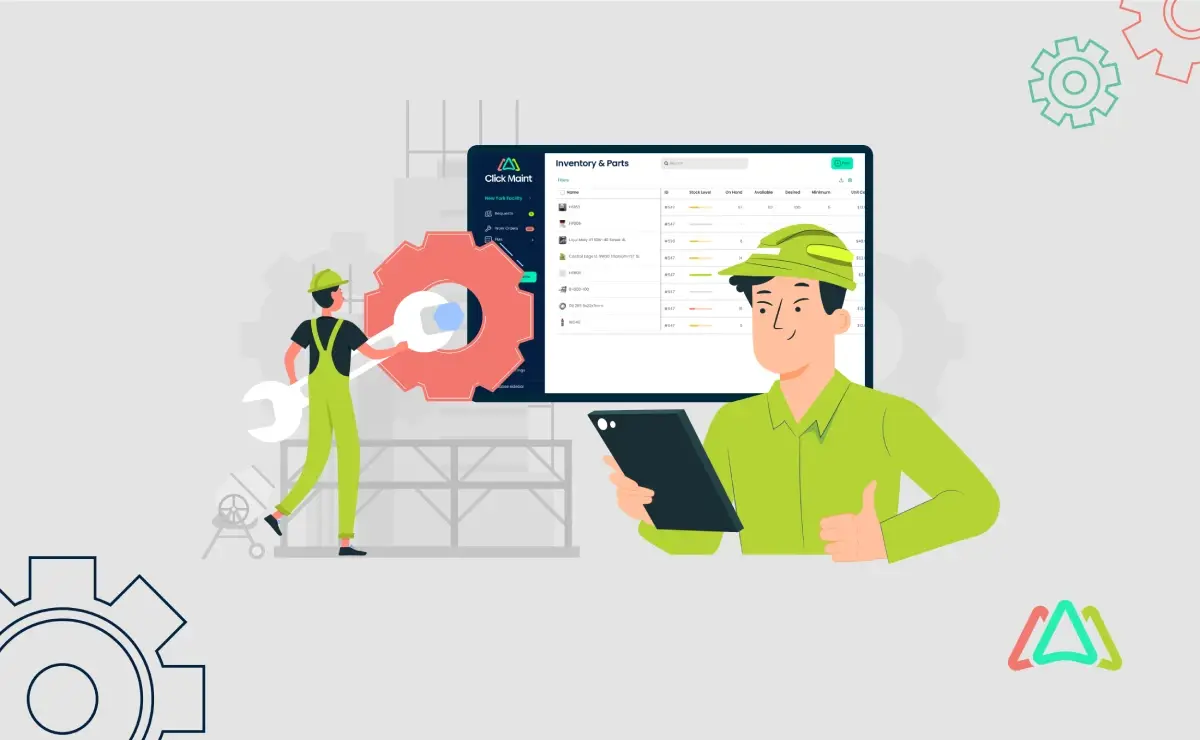
Introduction
A Computerized Maintenance Management System (CMMS) is a software solution designed to streamline maintenance operations by managing work orders, scheduling preventive maintenance, tracking assets, and generating reports. For small businesses, CMMS software is essential in optimizing maintenance processes, reducing downtime, and cutting costs. Implementing a CMMS can lead to improved equipment reliability, increased productivity, and enhanced regulatory compliance. The importance of CMMS for small businesses cannot be overstated. It helps manage limited resources more efficiently, ensures timely maintenance of equipment, and prevents costly breakdowns. Additionally, CMMS provides valuable insights through data analytics, aiding in better decision-making and strategic planning.
The purpose of this article is to guide small business owners and managers through the initial stages of adopting CMMS software. It will cover understanding the need for CMMS, building a strong case for its adoption, securing executive buy-in, planning the budget, developing an implementation plan, and monitoring success.
Understanding the Need for CMMS
Small businesses often face several maintenance challenges, such as unplanned equipment downtime, ineffective maintenance practices, and poor inventory management. These issues can lead to increased operational costs, reduced productivity, frequent equipment failures, compliance issues, and safety hazards, further impacting business operations and profitability. CMMS implementation offers numerous benefits for small businesses. Improved maintenance efficiency is one of the primary advantages, as CMMS automates scheduling, work order management, and inventory tracking. This leads to significant cost savings by reducing downtime and extending the lifespan of equipment through timely preventive maintenance. Additionally, CMMS ensures compliance with regulatory standards by maintaining accurate records and providing timely reports. Overall, CMMS enhances operational efficiency, reduces costs, and supports long-term business growth.

Conducting Needs Assessment
To build a strong case for CMMS, begin by assessing your current maintenance processes. Evaluate how maintenance tasks are managed, from work order creation to task completion. Identify gaps and inefficiencies, such as frequent equipment breakdowns, poor inventory management, or missed preventive maintenance schedules. By understanding these pain points, you can define specific goals for CMMS implementation, such as reducing downtime, improving asset tracking, and ensuring timely maintenance.
Researching CMMS Solutions
Researching CMMS software is vital to finding the right fit for your business. Look for features that address your specific needs, such as work order management, preventive maintenance scheduling, asset tracking, inventory management, and reporting capabilities. Compare different CMMS providers based on these features, as well as their reputation, customer support, and ease of use. Additionally, evaluate the scalability and flexibility of each solution to ensure it can grow with your business and adapt to changing needs.
Creating a Cost-Benefit Analysis
A thorough cost-benefit analysis helps in justifying the investment in CMMS. Start by estimating the costs of CMMS implementation, including software licensing, hardware requirements, initial setup, and training expenses. Next, project the potential savings and ROI by considering factors such as reduced downtime, extended equipment lifespan, and lower maintenance costs. To strengthen your case, reference case studies and success stories from similar businesses that have successfully implemented CMMS. These examples can provide valuable insights into the tangible benefits and ROI achieved through CMMS adoption. By presenting a well-researched and data-driven cost-benefit analysis, you can effectively demonstrate the value of CMMS to key stakeholders and decision-makers.
Securing Executive Buy-In

Preparing a Persuasive Presentation
To secure executive buy-in, prepare a compelling presentation that highlights the benefits and ROI of CMMS. Emphasize how CMMS improves maintenance efficiency, reduces costs, and extends equipment lifespan. Address potential concerns and objections by presenting data-driven evidence and case studies that showcase successful implementations in similar businesses. Present a clear implementation plan outlining the steps, timeline, and resources required for a smooth transition.
Involving Key Stakeholders
Identify key decision-makers and influencers within your organization, including executives, managers, and team leaders. Engage maintenance, IT, and finance teams early in the process to gather their support and feedback. Involving these stakeholders ensures that their insights and expertise are considered, which can help address potential challenges and create a sense of ownership and collaboration.
Aligning CMMS with Business Objectives
Demonstrate how CMMS supports the overall business goals and aligns with strategic initiatives. Show how the system can enhance operational efficiency, improve customer satisfaction, and contribute to long-term growth and sustainability. Emphasize the long-term benefits of CMMS, such as better decision-making through data analytics and improved regulatory compliance. By aligning CMMS with the organization's objectives, you can make a compelling case for its adoption and secure the necessary buy-in from executives and key stakeholders.
Planning the Budget
Estimating Initial Costs
To plan the budget for CMMS implementation, begin by estimating the initial costs. This includes software licensing and subscription fees, which can vary based on the provider and the features included. Factors in the initial setup and customization costs may involve configuring the software to meet your specific business needs and integrating it with existing systems.
Calculating Ongoing Costs
Consider if there are any ongoing costs associated with maintaining and operating the CMMS. These include maintenance and support fees, which ensure the software remains up-to-date and functions smoothly. Training and onboarding expenses are also important, as your team will need to be adequately trained to use the system effectively. Additionally, account for potential upgrades and scaling costs that may arise as your business grows and requires additional features or expanded capacity.

Exploring Funding Options
Explore various funding options to support the CMMS implementation. Internal budget reallocation may be necessary to prioritize this investment. Additionally, a phased implementation approach can help spread out costs over time, making the financial commitment more manageable. By carefully planning and exploring funding options, you can ensure a smooth and financially viable maintenance management software adoption process.
Developing an Implementation Plan
Setting Realistic Timelines
Establishing realistic timelines is a key element for a successful CMMS implementation. Break the project into manageable phases, such as planning, setup, data migration, and go-live. Define key milestones and deadlines for each phase to keep the project on track. Incorporate contingency planning to address potential challenges and delays, ensuring that the implementation stays on schedule even if unexpected issues arise.
Assembling the Implementation Team
Form a dedicated implementation team with clearly defined roles and responsibilities. Include representatives from maintenance, IT, finance, and other relevant departments to ensure a holistic approach. Involve both internal staff and external experts, such as CMMS vendors or consultants, to leverage their expertise. Effective communication and collaboration are essential, so establish regular meetings and update sessions to keep everyone aligned and informed about progress and any issues that need addressing.
Training and Change Management
Develop a comprehensive training program to ensure all users are proficient with the new CMMS. Tailor the CMMS training to different user roles, providing hands-on sessions and supporting materials. Address resistance to change by communicating the benefits of CMMS and involving employees in the process. Provide continuous support during the transition to ensure a smooth adoption. By focusing on thorough training and effective change management, you can facilitate a seamless integration of the CMMS into your business operations.
Monitoring and Evaluating Success

Setting KPIs and Metrics
To monitor and evaluate the success of your CMMS implementation, establish key performance indicators (KPIs) to track. These might include metrics such as reduced downtime, improved maintenance response times, cost savings, and compliance rates. Set benchmarks based on industry standards or past performance to measure progress. Regularly monitor and report on these KPIs to ensure the CMMS is delivering the expected benefits and identify any areas needing attention.
Gathering Feedback and Making Adjustments
Solicit feedback from users to understand their experiences and identify any challenges they face with the CMMS. Use surveys, interviews, and feedback sessions to gather insights. Identify areas for improvement based on this feedback and make necessary adjustments to the system. Continuous improvement is key to ensuring the CMMS meets the evolving needs of your business and maximizes its benefits.
Celebrating Successes
Recognize and celebrate achievements and milestones reached during the CMMS implementation process. Share success stories within the organization to highlight the CMMS's positive impact. Celebrating successes helps maintain momentum and promotes a positive attitude toward continuous improvement. By acknowledging the hard work and benefits realized, you can encourage ongoing engagement and support for the CMMS, ensuring its long-term success and CMMS integration into your business operations.
Conclusion
Adopting a CMMS involves several critical steps: understanding maintenance needs, building a strong case, securing executive buy-in, planning the budget, developing an implementation plan, and monitoring success. This structured approach ensures a smooth transition and maximizes the benefits of the CMMS.
For small businesses, taking the first steps toward CMMS adoption can significantly enhance maintenance efficiency, reduce costs, and improve overall operational performance. The journey may seem daunting, but with careful planning and commitment, the rewards are substantial.
In summary, CMMS offers numerous advantages, including extended equipment lifespan, improved regulatory compliance, and data-driven decision-making. By embracing CMMS, small businesses can achieve long-term growth and sustainability. Now is the time to take action, initiate the adoption process, and transform your maintenance operations for the better.
TABLE OF CONTENTS
Keep Reading
Ever find yourself checking into a luxury hotel and expecting a relaxing stay, only to find a ...
11 Apr 2025
Organizations are witnessing swift changes in the business environment and confronting a ...
8 Apr 2025
Last month, news outlets and the entire internet was abuzz with the return of NASA astronauts ...
3 Apr 2025
What comes first - CMMS or predictive maintenance? If your answer is either, it is correct. ...
28 Mar 2025
Artificial intelligence (AI) talk has become commonplace. Today, engaging in business-focused ...
27 Mar 2025
Imagine a world where machines predict, diagnose, and fix their issues before they fail. This ...
25 Mar 2025
A facility maintenance plan is at the core of a facility’s operations. This organized ...
21 Mar 2025
Think of managing your maintenance operations like managing a championship sports team. Just ...
21 Mar 2025
The maintenance sector is battling a severe talent shortage that threatens to undermine ...
7 Mar 2025
Manufacturing maintenance is the backbone of industrial efficiency, ensuring machines run ...
5 Mar 2025
No one likes playing a guessing game when equipment breaks down. Yet, maintenance teams often ...
4 Mar 2025
The size of the preventive maintenance software market is discussed in millions of dollars, ...
4 Mar 2025
The organizational structure and corporate hierarchy vary from company to company. Large ...
28 Feb 2025
Maintenance procedures are essential for ensuring the longevity and reliability of machinery ...
21 Feb 2025
Sustainability is no longer just a buzzword; it's a critical component of corporate social ...
20 Feb 2025
A Computerized Maintenance Management System (CMMS) relies on accurate, well-organized data ...
18 Feb 2025
In an era where technology drives operational efficiency, Computerized Maintenance Management ...
14 Feb 2025
A Computerized Maintenance Management System (CMMS) is a key component of modern maintenance ...
13 Feb 2025
Introduction Maintenance management is the foundation of maintenance operations in industries ...
11 Feb 2025
Introduction A Computerized Maintenance Management System (CMMS) is software designed to help ...
7 Feb 2025





